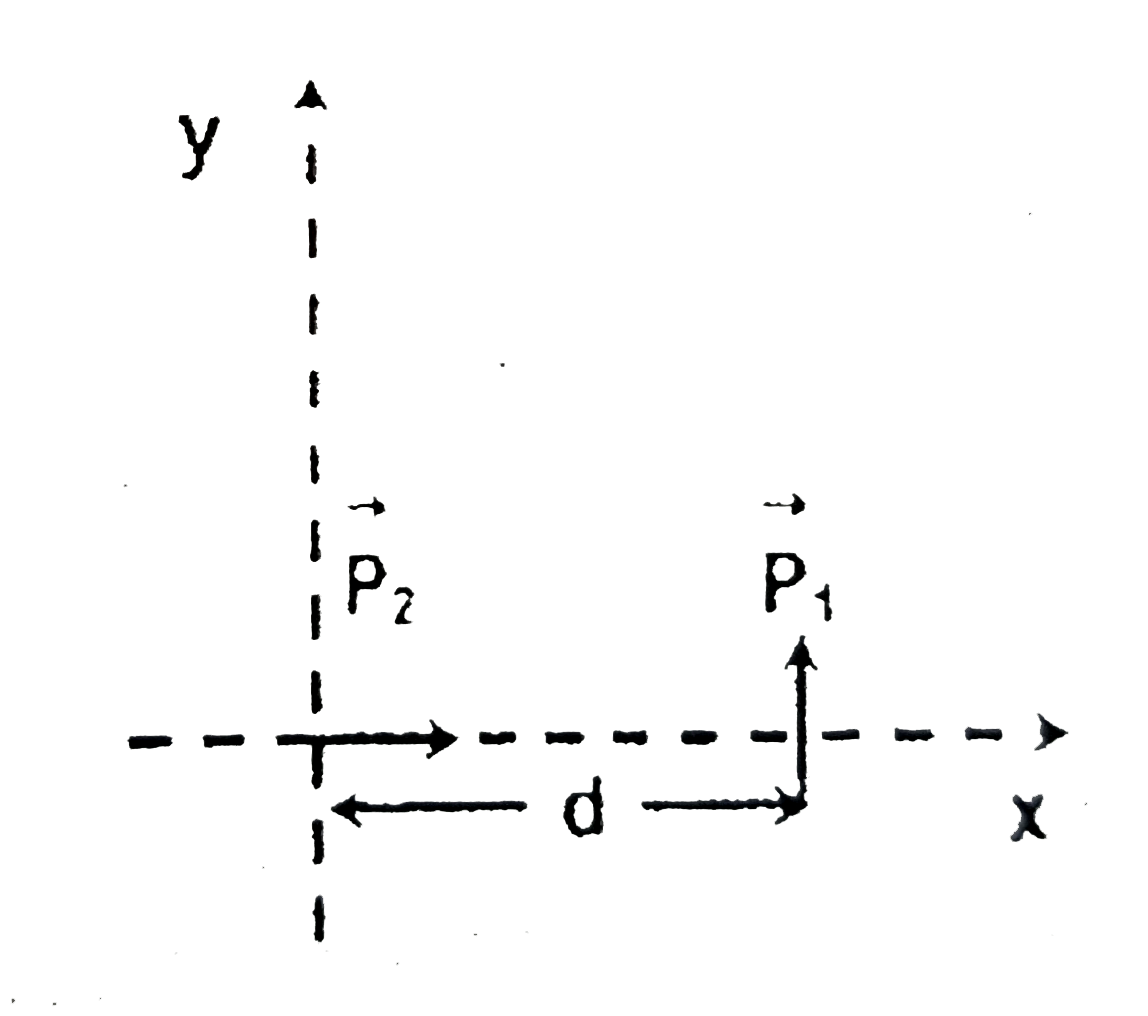Two balls having linear momenta →p1=pˆi and →p2=−pˆi, undergo a collision in fre space. There is no external force acting on the ball. Let →p′1 and →p′2 be their final moment. Which of the following option(s) is (are) NOT ALLOWED for an non zero value of p,a1,a2,b1,b2,c1 and c2.
→P′1=a1ˆi+b1ˆj+a1k,→p′2=a2ˆi+b2ˆj
→P′1=c1k,→p′2=c2k
→P′1=a1ˆi+b1ˆj+a1k,→p′2=a2ˆi+b2ˆj−c2k
→P′1=a1ˆi+b1ˆj,→p′2=a2ˆi+b2ˆj
The correct Answer is:A, D
Initial momentum of the system. , →p1+→p2=0
Therefore, final momentum →p′1+→p′2 should also be zero.
Option (b) is allowed because if we put C1=−C2≠0,→p′1→p′2 will be zero. Similarly, we can check other options. Hence correct options are (a) and (d).
Topper's Solved these Questions
- ENERGY & MOMENTUMBOOK - VMC MODULES ENGLISHCHAPTER - ENERGY & MOMENTUMEXERCISE - JEE ADVANCE (ARCHIVE) - PARAGRAPH QUESTIONS
5 Videos
- ENERGY & MOMENTUMBOOK - VMC MODULES ENGLISHCHAPTER - ENERGY & MOMENTUMEXERCISE - JEE ADVANCE (ARCHIVE) - ASSERTION & REASON TYPE
1 Videos
- ENERGY & MOMENTUMBOOK - VMC MODULES ENGLISHCHAPTER - ENERGY & MOMENTUMEXERCISE - JEE MAIN (ARCHIVE)
53 Videos
- ELECTROSTATICSBOOK - VMC MODULES ENGLISHCHAPTER - ELECTROSTATICSEXERCISE - JEE Advanced (Archive)
89 Videos
- GASEOUS STATE & THERMODYNAMICSBOOK - VMC MODULES ENGLISHCHAPTER - GASEOUS STATE & THERMODYNAMICSEXERCISE - JEE ADVANCED (ARCHIVE )
111 Videos
Similar Questions
Two balls having linear momenta →p1=pˆi and →p2=−pˆi, undergo a collision in free space. There is no external force acting on the ball. Let →p′1 and →p′2 be their final momenta. Which of the following option(s) is (are) NOT ALLOWED for an non zero value of p,a1,a2,b1,b2,c1 and c2.
View SolutionLet (a1,b1) and (a2,b2) are the pair of real numbers such that 10,a,b,ab constitute an arithmetic progression. Then, the value of (2a1a2+b1b210) is
View SolutionLet →p=3ax2ˆi−2(x−1)ˆj,q=b(x−1)ˆi+xˆj and ab<0. Then →p and →q are parallel for:
View SolutionTwo dipoles →P1 and →P2 are oriented as shown in the figure. Assuming dipole of dipole moment →P2 to be placed at origin and dipole of moment →P1 is at a distance 'd' from origin then

View SolutionIf two equation a1x2+b1x+c1=0and,a2x2+b2x+c2=0 have a common root, then the value of (a1b2−a2b1)(b1c2−b2c1), is
View SolutionLet →a=a1ˆi+a2ˆj+a3ˆk,→b=b1ˆi+b2ˆj+b3ˆk and →c=c1ˆi+c2ˆj+c3ˆk be three non- zero vectors such that →c is a unit vectors perpendicular to both the vectors →a and →b. If the angle between →a and →b is π6 then
∣∣ ∣∣a1a2a3b1b2b3c1c2c3∣∣ ∣∣2 is equal to
View SolutionIf the quadratic polynomials defined on real coefficient
P(x)=a1x2+2b1x+c1 and Q(x)=a2x2+2b2x+c2 take positive values ∀x∈R, what can we say for the trinomial g(x)=a1a2x2+b1b2x+c1c2 ?
View SolutionLet ABC and AB'C be two non-congruent triangles with sides BC=B'C=5, AC=6, and ∠A is fixed. If A1 and A2 are the area of the two triangles ABC and AB'C, then the value of A21+A22−2A1A2cos2A(A1+A2)2 is
View SolutionIf the momenta of two particles of a system are given by →p1=2ˆi−ˆj+3ˆk and →p2=−ˆi+2ˆj−2ˆk then calculate the angle made by the direction of motion of the system with positive x-axis.
View SolutionIf a1anda2 are two non- collinear unit vectors and if |a1+a2|=√3, ,then value of (a1−a2).(2a1−a2) is
View Solution
